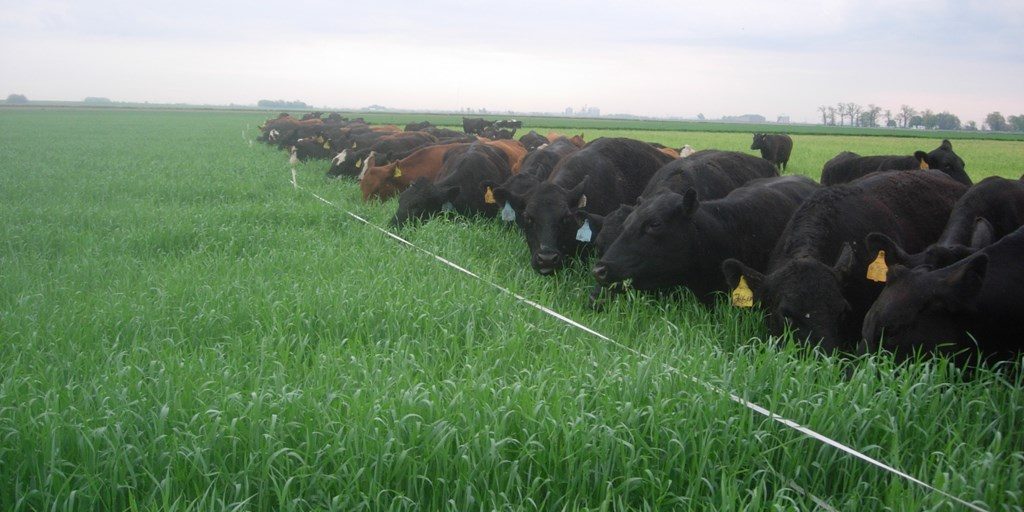Grazing can provide many benefits to your operation such as producing feed for livestock, lengthening the grazing season, and producing a second crop off of your corn and soybean acres; however, implementing grazing requires planning. One thing to consider is the time of year your livestock will be utilizing this additional grazing and what cover crops make the most sense for your operation.
Below are some guidelines for grazing timing, cover crop options, and when to establish that cover crop:
Spring
Establish cereal rye, wheat or triticale in the fall for grazing in the spring.
Summer
Establish summer annuals, such as pearl millet and sorghum-sudan to be grazed before frost. These usually need 45 to 60 days before grazing and are best utilized behind wheat or other small grain crops. In general, summer annuals should not be grazed when frost is possible to avoid prussic acid concerns.
Fall
Establish turnips, radishes, and oats in the summer for grazing in the fall
You can do this by interseeding a cover crop in a standing corn crop. With favorable weather, the green cover crop is established and ready to be grazed after harvest and into the fall. Planting a soybean crop following the cover crop grazing rotation is a good choice. However, if grazing is limited to fall, any planting issues the following spring are usually eliminated.
Brassicas such as turnips and radishes should not be the only source of feed for cattle. They should be included in a mix or other feed such as hay should be provided to avoid herd health issues.
Grazing cover crops favors utilizing a mix of multiple crop species within the same field. By using multiple species we can enhance feed quality, reduce potential herd health issues and increase soil health benefits. Overall, implementing grazing gives growers a potential economic advantage by saving on harvested forages and utilizing livestock manure to improve soil health.
Every growing season and operation is unique, but the key is planning before implementing. Reach out to other growers in your area, and discuss your plan with your forage seed provider. Adding cover crops could not only enhance your row-crop operation, but your livestock operation as well.





Post a comment
Report Abusive Comment